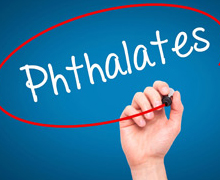
A new study shows it’s not only what’s on the menu that should be a concern, but what comes with your meal at a restaurant that could affect your health. Researchers have determined people who eat out frequently are being exposed to high levels of phthalates in their food.
Phthalates are a group of hormone-disrupting chemicals used in food packaging and processing materials that have been linked to a long list of health problems, including male reproductive issues. Researchers from the Milken Institute School of Public Health at George Washington University found people who reported eating restaurant food, fast food and cafeteria food had levels of phthalates in their bodies 35 percent higher than those who reported eating at home what was purchased from a grocery store.
“This study suggests food prepared at home is less likely to contain high levels of phthalates, chemicals linked to fertility problems, pregnancy complications and other health issues,” said Ami Zota, a senior author on the study. “Our findings suggest that dining out may be an important, and previously under-recognized, source of exposure to phthalates for the U.S. population.”
Assessing data from more than 10,000 study participants between 2005 and 2014, researchers looked at where these volunteers’ food came from in the previous 24 hours. That was then analyzed with the phthalate level in urine samples. Nearly 2/3 of the survey respondents reported dining out the previous day.
“Preparing food at home may represent a win-win for consumers,” Dr. Zota said. “Home cooked meals can be a good way to reduce sugar, unhealthy fats and salt. This study suggests it may not have as many harmful phthalates as a restaurant meal.”
While contamination was found throughout all age groups, it was most prevalent among teenagers. Adolescents who ate out the previous day had 55 percent higher phthalate levels compared to those who only ate at home. That is thought to be due to fast food and cafeteria food consumption. Cheeseburgers and other sandwiches appeared to be the biggest contributor to phthalate levels.
“Our data suggests that phthalate contamination of the food supply is a widespread problem and one that we need to address,” Dr. Zota said. “This problem has to be addressed at a more systemic level so that everyone truly can have access to healthy food.”
